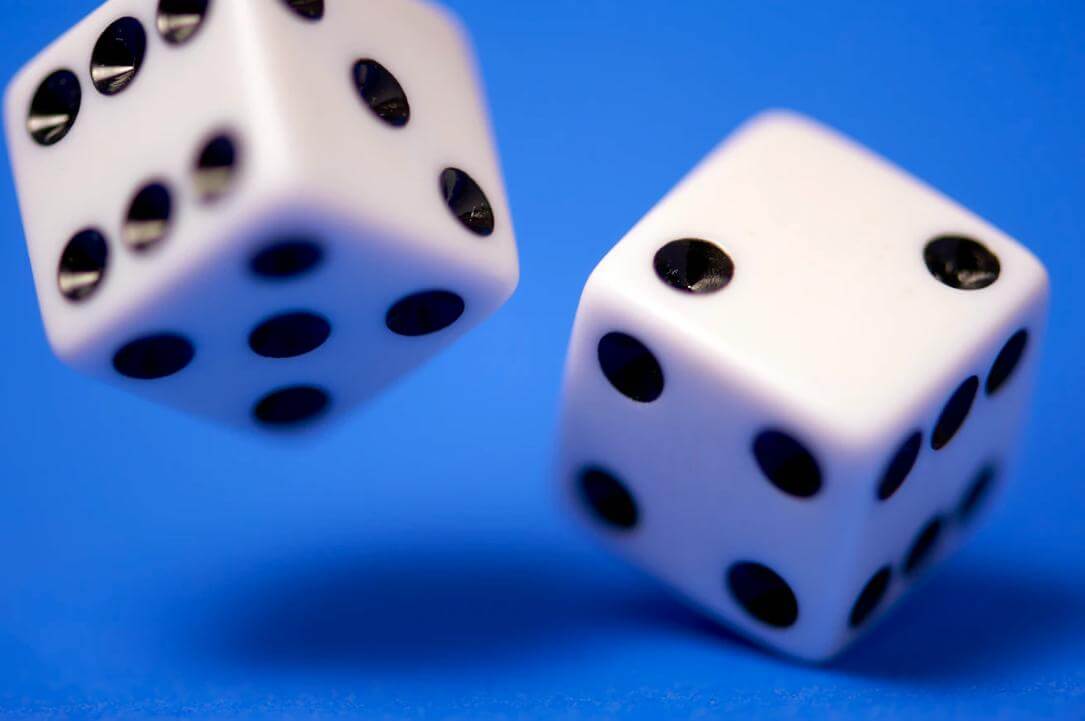Emulate a six-sided dice
This is the first in a series of articles on various code snippets in JavaScript
By: Ajdin Imsirovic 05 January 2021
This is a nice and easy coding exercise for beginners.

We can use this code snippet to emulate a dice. We’ll use Math.random(), which returns a value between 0 and 0.99.
1
2
let result = Math.random();
console.log(result); // we might get, say, 0.36
All we need to do now, to make this work, is to multiply our random number with 6.
1
2
let result = Math.random() * 6;
console.log(result);
Let’s say we got 0.99 from our Math.random() call; after multiplying it by 6, the number we’ll get is 5.94. So we need to round this number. We could round it to the closest integer with Math.round(), so:
1
2
let result = Math.round(Math.random() * 6);
console.log(result);
If the result was 0.99 again, it would get rounded to 6. Great! But what if the result was 0.01?
Here’s some code to quickly test what would happen:
1
2
let result = 0.01 * 6;
Math.round(result);
This would return 0, but that’s obviously not what we want; we want a range between 1 and 6. We can try using Math.ceil() (as in “ceiling”), so that if we get 0.01 as the output of Math.random(), the end result would be 1. Let’s run our quick test again to confirm this:
1
2
let result = 0.01 * 6;
Math.ceil(result);
Indeed, we get back a one. However, we’re not fully done with our dice emulator. This is due to the fact that the range of results of Math.random() is from zero (inclusive) to one (exclusive). In other words, when we ran Math.random(), we can get back 0, 0.99, or any number in between. This means that in the rare case of us getting a zero, our Math.ceil() approach will not work any more, because the Math.ceil(0) returs a zero.
The solution to the above issue is simple. Instead of Math.ceil(), we’ll use Math.floor(), but we’ll add a +1 to our code. That way, if we get a zero, it’s already floored, so we’ll just add a +1. However, if we get, say, a 0.01, we’ll floor it to zero, then add a +1 to get 1.
Here’s the updated code:
1
2
let result = Math.floor(Math.random() * 6) +1;
console.log(result);
The above code will work. However, to make sure that it indeed does work, we can run a test, in which we’ll replace the Math.random() bit above with a few values: 0, 0.01, and 0.99.
Let’s first run a quick test for a zero:
1
2
let result = Math.floor( 0 * 6 ) +1;
console.log(result); // 1
Next, let’s test 0.01:
1
2
let result = Math.floor( 0.01 * 6 ) +1;
console.log(result); // 1
Finally, let’s test 0.99:
1
2
let result = Math.floor( 0.99 * 6 ) +1;
console.log(result); // 6
That’s it, we’ve successfully written code that can emulate a throw of a six-sided dice.
Note:
This exercise comes from Book 3
of my book series on JS, available on Leanpub.com.


